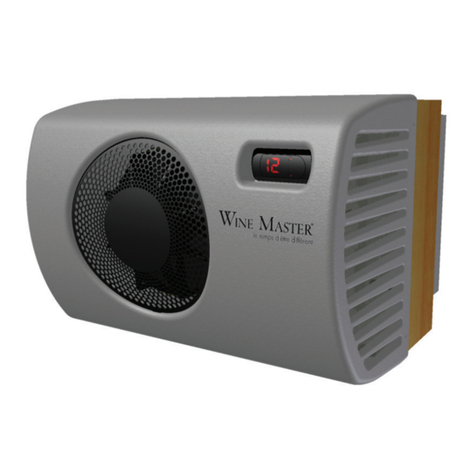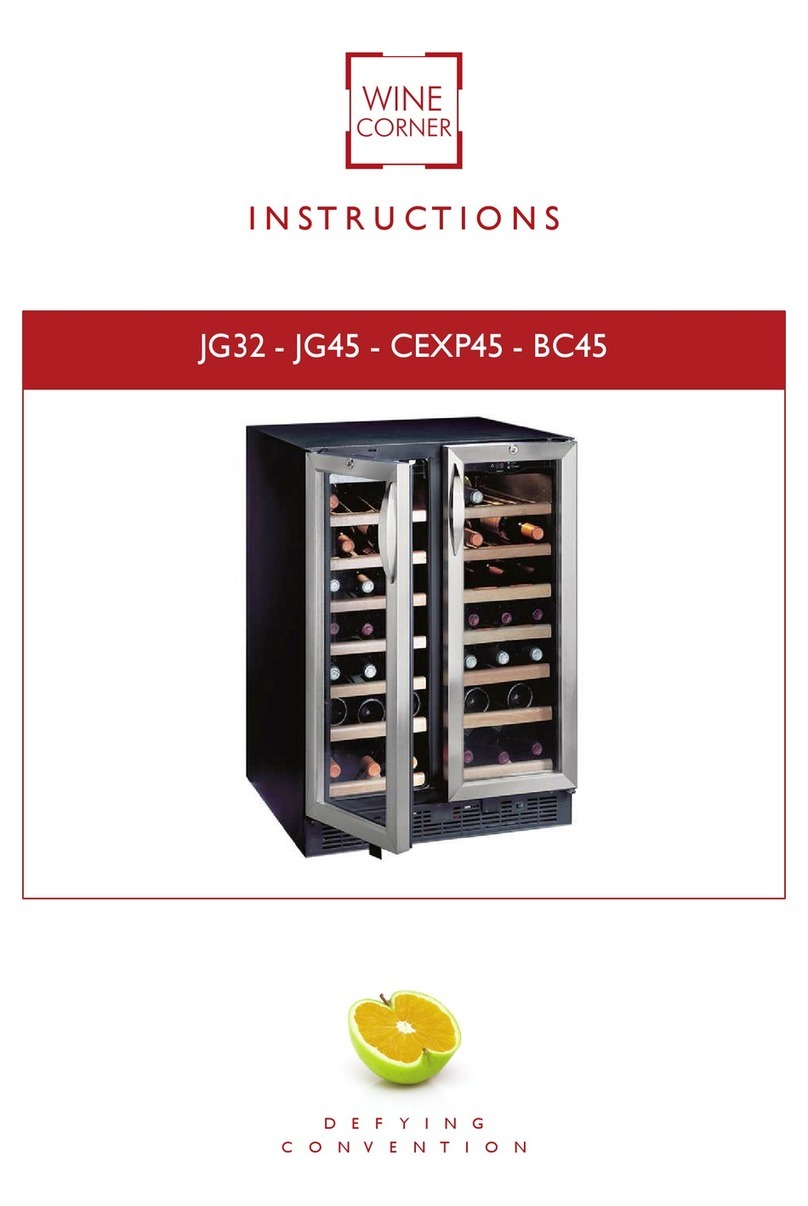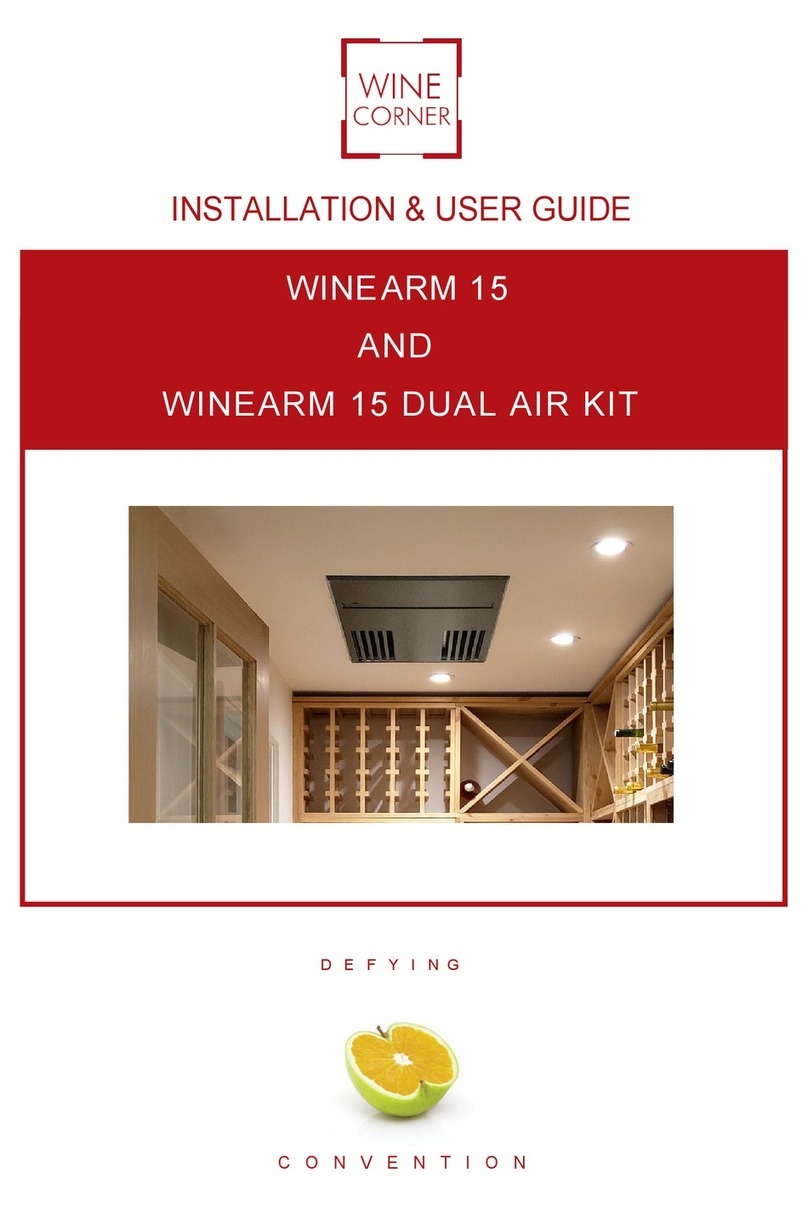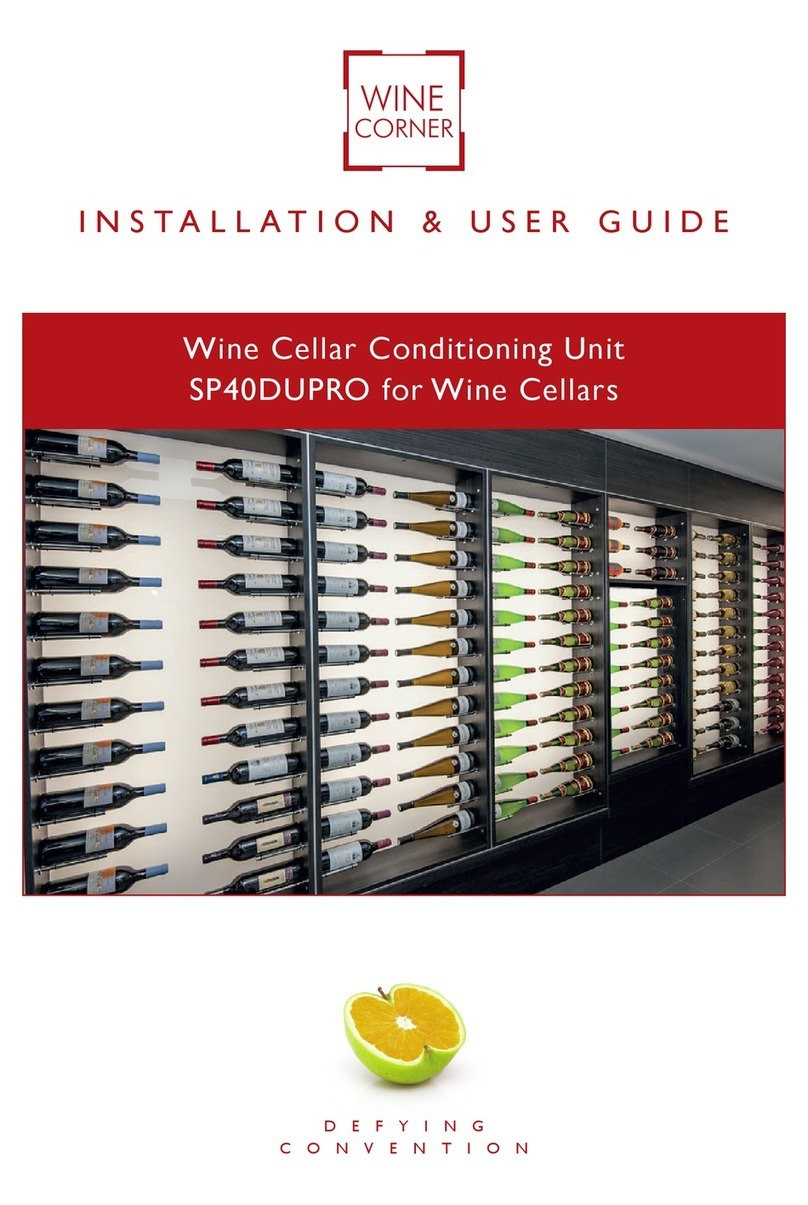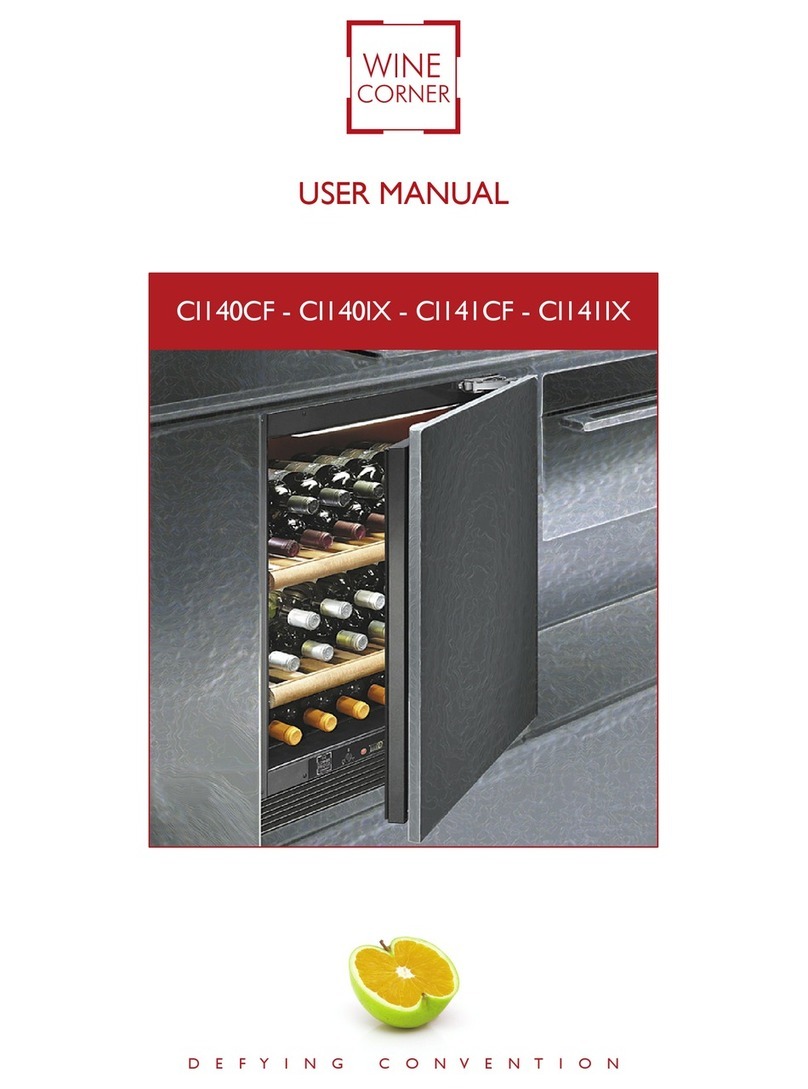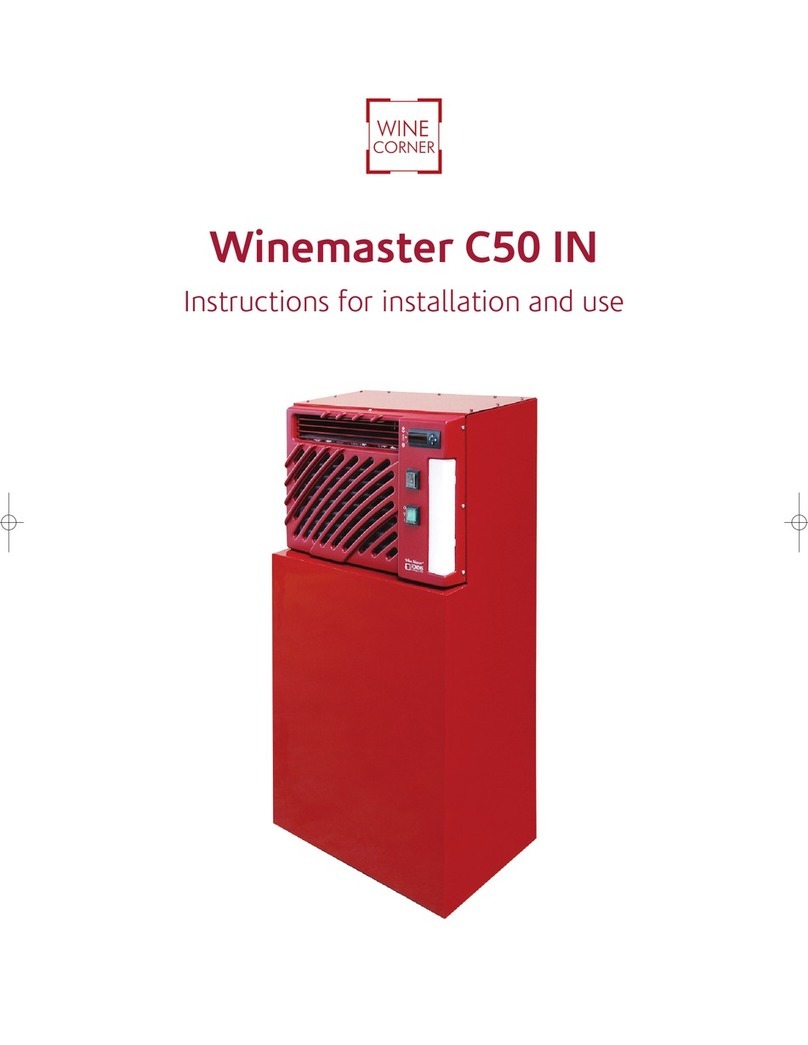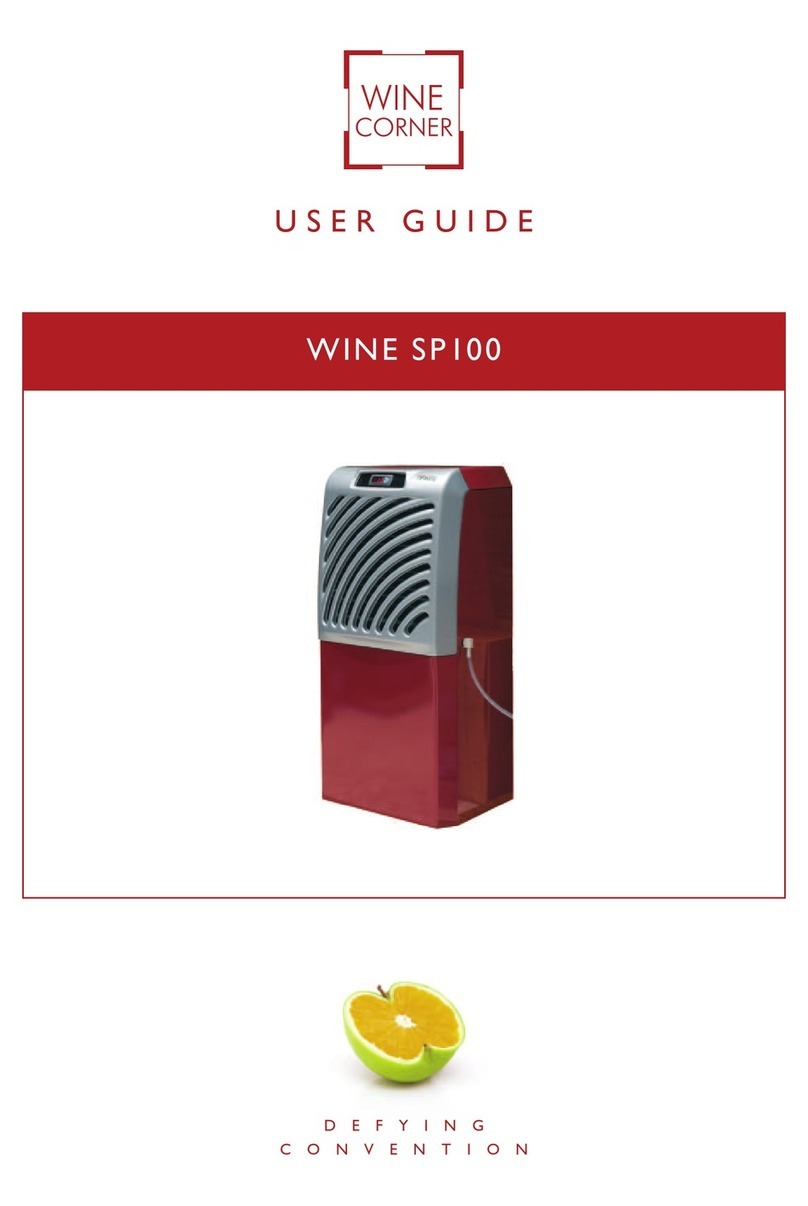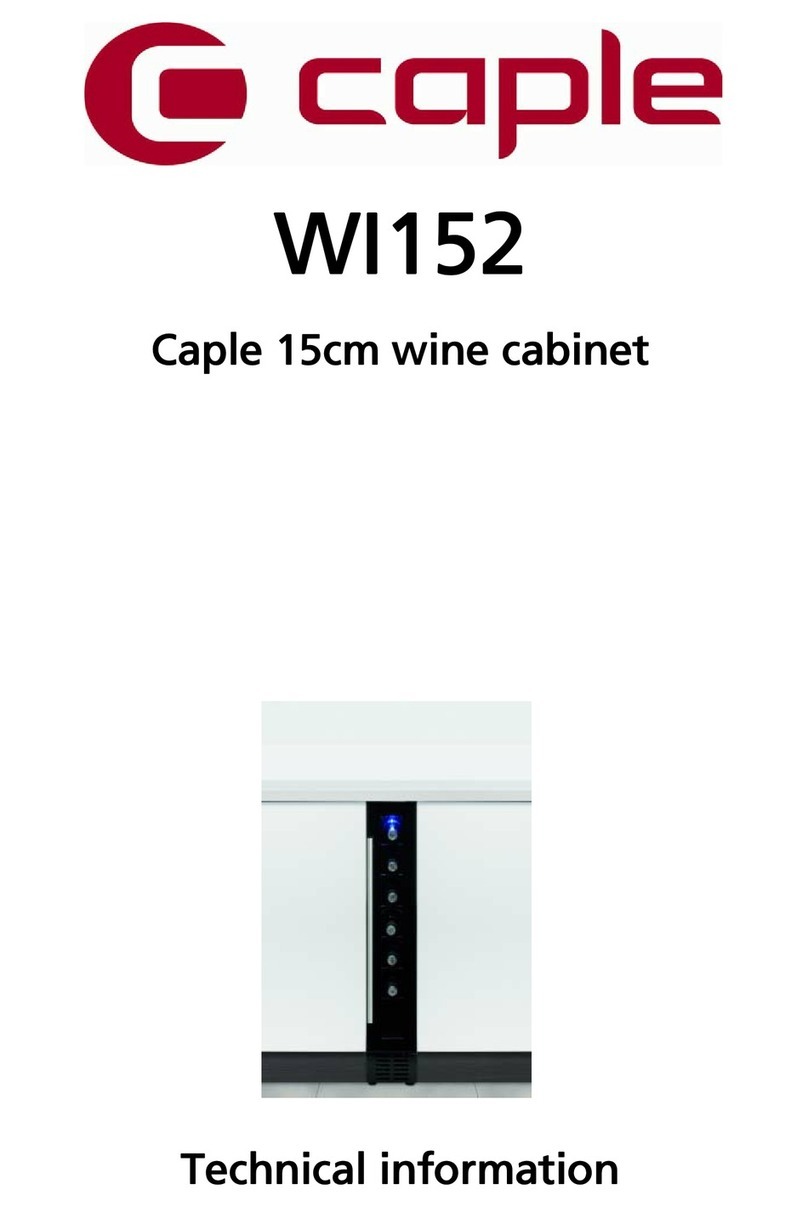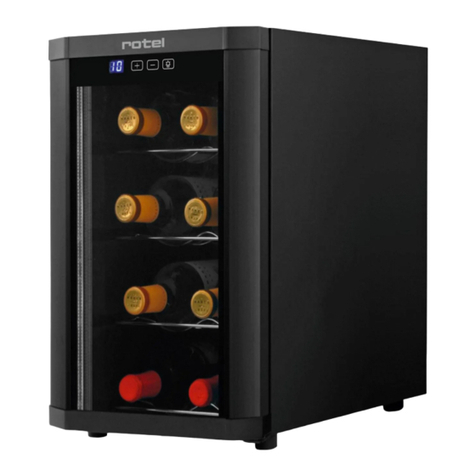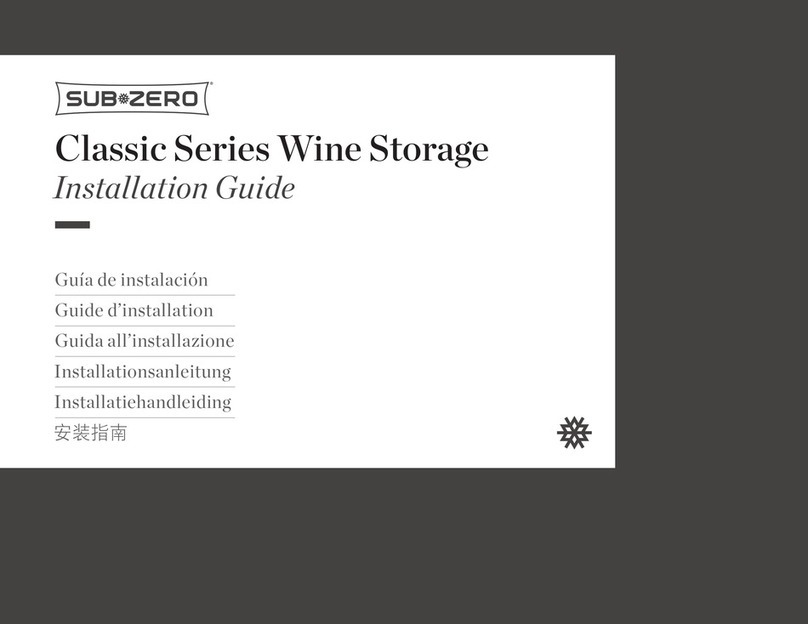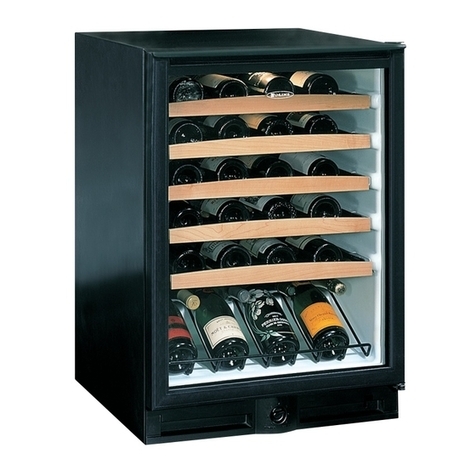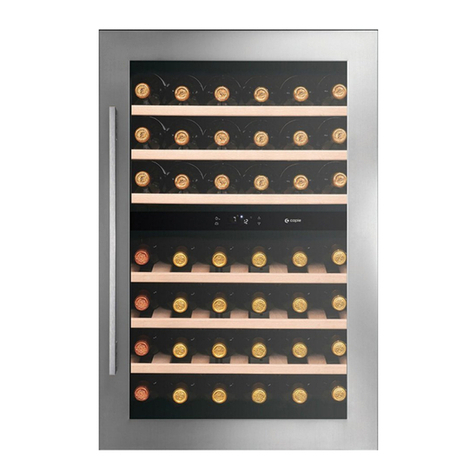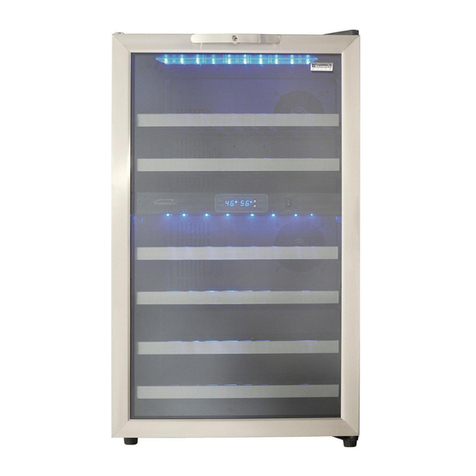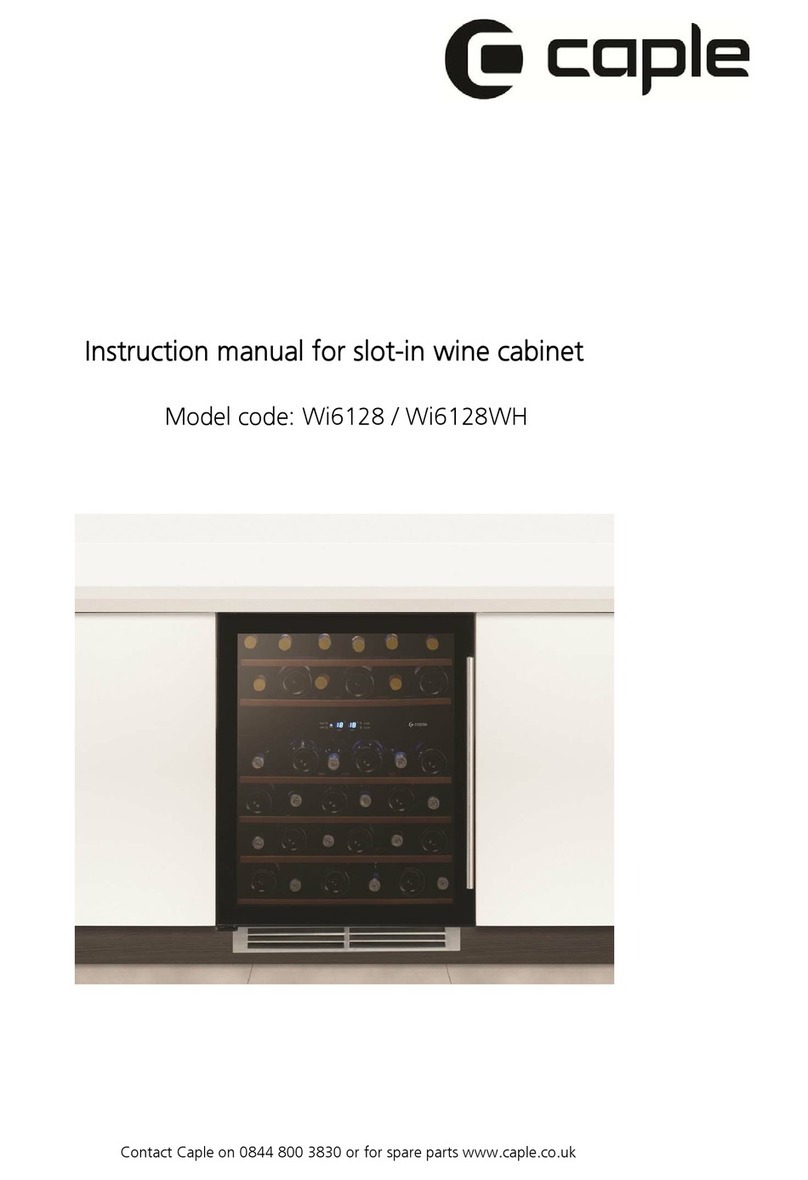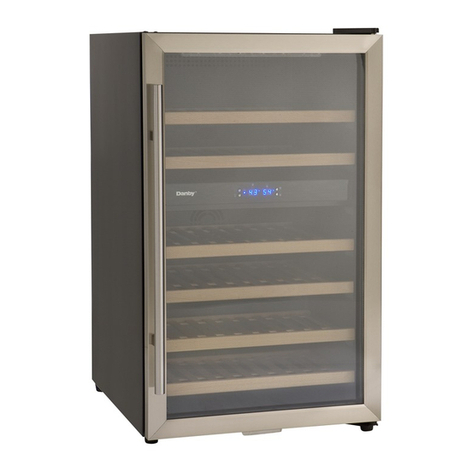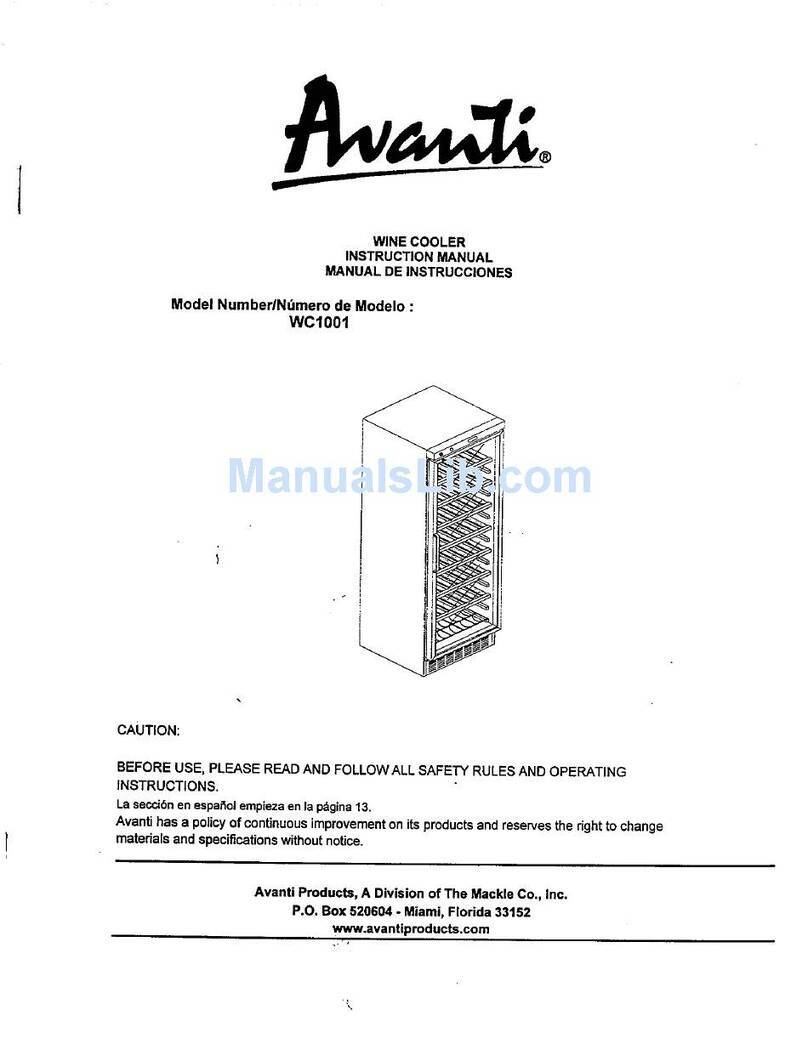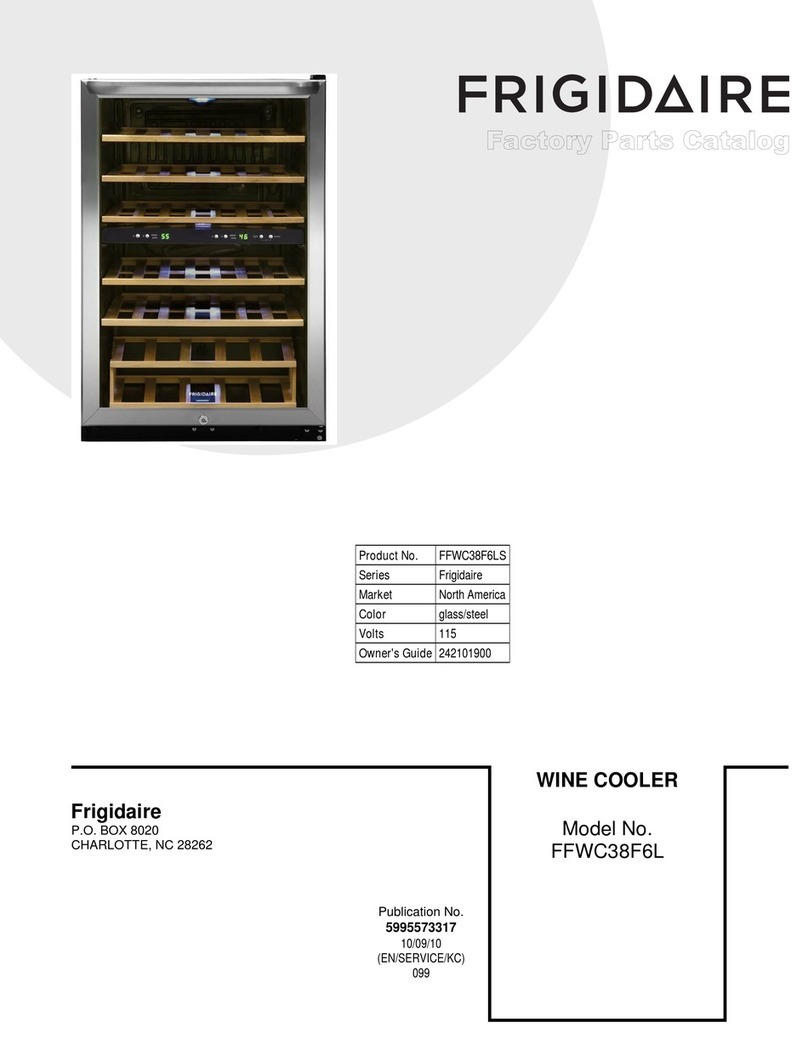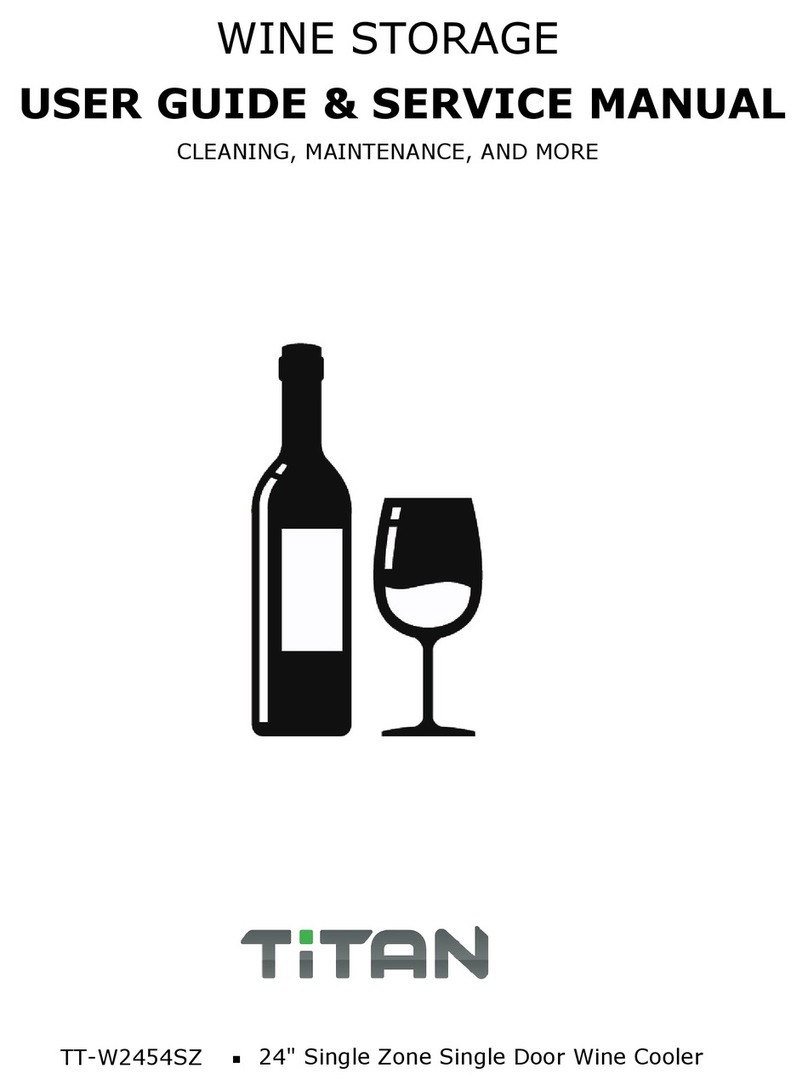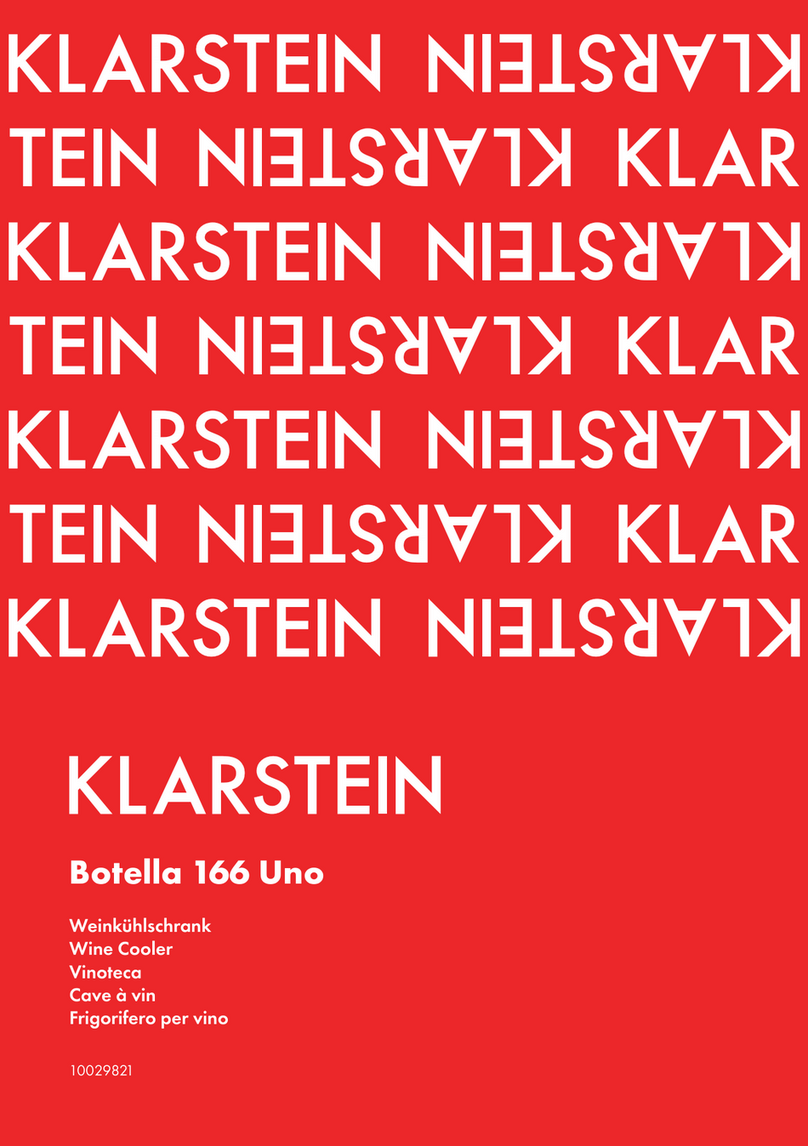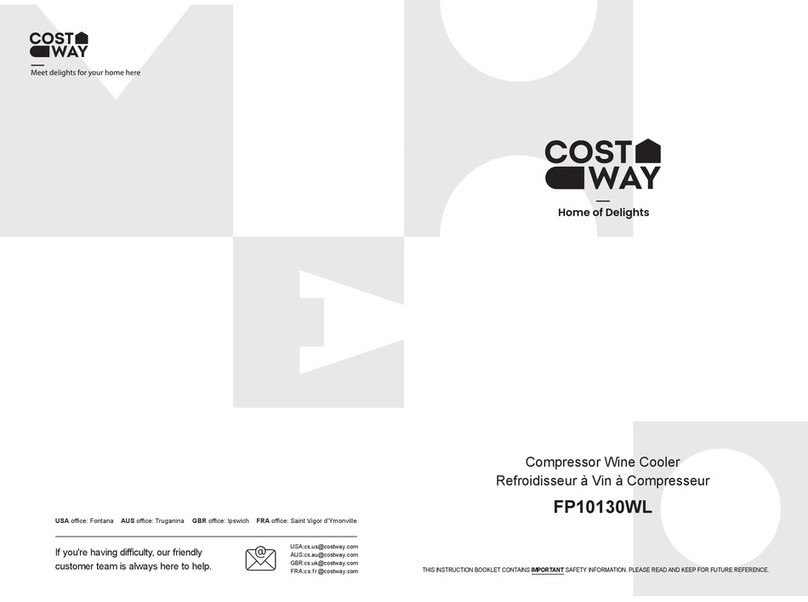7
2. Some advice
2.1. Conservation of the wine
The wine must have a place all to itself.
For the conservation and the ageing of the wine, the environment has to meet
certain conditions.
The stability of the cellar temperature, more so than the temperature itself, is
important for good conservation of the wine.
The central heating pipes and a boiler close by are great enemies of the wine.
A good cellar should be neither too dry nor too humid.
The effect of dry air is treacherous: it dries the cork, causes a considerable
evaporation of the wine through the cork and makes the bottle leaky.
Too much humidity favours the growth of mould on barrels and corks.
A humidity level of around 70 % is ideal, but for the wine, the humidity level can
vary between 40 and 100 % without degeneration.
The cellar must be closed and protected against vibrations. The shelves or racks
must be isolated from all possible sources of vibration and stand on the ground,
rather than be attached to a wall which is more sensitive to vibrations.
In order to age, the wine has to be protected from the light. The cellar must
therefore be dark and the use of light be limited to the bare minimum.
When these conditions are met, the wine will keep for a long time. The cellar will
ensure a good maturation and an optimal ageing of the wine.
Wine is not as sensitive as is often thought, it must above all be protected from
its most important enemies: sudden temperature changes, light … and those who
abuse it!
2.2. Exhaust air space
- The "hot" front of the WINEMASTER® must be inside a room.
The room, into which the exhaust air of the WINEMASTER® goes, must be well
ventilated, so that the maximum and permanent temperature does not exceed
35°C, the ideal temperature being 20°C.
Attention, too little room inside the cellar can result in the hot air being emitted
by the air-conditioning, being sucked in again. The outside of the appliance must
not be installed in a dip or a space that is too small.
